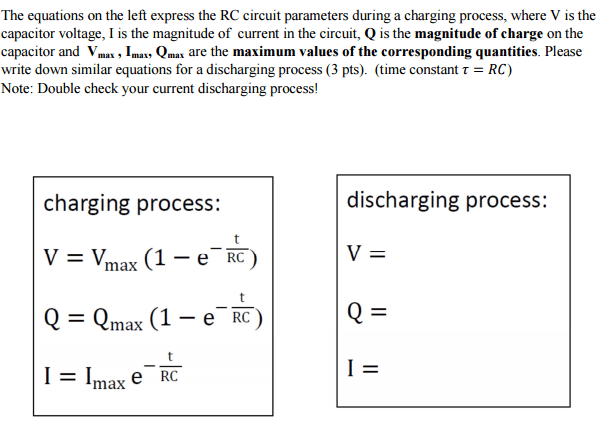What Is Charging Capacitor Voltage? Easy Equation

Charging capacitor voltage is a fundamental concept in electronics, and understanding it is crucial for designing and working with capacitive circuits. In simple terms, charging capacitor voltage refers to the process of storing electrical energy in a capacitor by applying a voltage across its plates. The voltage across the capacitor increases as it charges, and the rate of this increase depends on several factors, including the capacitance value, the voltage source, and the resistance in the circuit.
To understand how charging capacitor voltage works, let’s consider the basic equation that governs the charging process. The voltage across a charging capacitor can be described by the following equation:
Vc(t) = Vss * (1 - e^(-t/RC))
Where: - Vc(t) is the voltage across the capacitor at time t - Vss is the supply voltage (the voltage of the power source) - e is the base of the natural logarithm (approximately 2.71828) - t is the time in seconds - R is the resistance in ohms - C is the capacitance in farads
This equation, known as the capacitor charging equation, shows how the voltage across the capacitor (Vc) changes over time (t) as it charges towards the supply voltage (Vss). The term “e^(-t/RC)” represents the exponential decay of the charging current, and the product of the resistance ® and capacitance © determines the time constant (RC) of the circuit, which influences how quickly the capacitor charges.
For example, if we have a circuit with a 10 μF capacitor, a 1 kΩ resistor, and a 12V power supply, we can calculate the voltage across the capacitor at any given time using the equation above. Assuming we want to find the voltage after 1 second, we first need to calculate the time constant (RC):
RC = R * C = 1000 Ω * 10 μF = 0.01 seconds (or 10 milliseconds)
Then, we can plug this value into the charging equation:
Vc(1) = 12V * (1 - e^(-1⁄0.01))
Calculating the value inside the parentheses first:
e^(-1⁄0.01) = e^(-100) ≈ 0
So,
Vc(1) ≈ 12V * (1 - 0) ≈ 12V
This calculation shows that after 1 second, the capacitor is nearly fully charged to the supply voltage of 12V, given the relatively short time constant of 10 milliseconds. In practice, the time it takes for a capacitor to fully charge depends on the specific values of R and C, and real-world applications often involve more complex circuits and considerations.
In summary, the charging capacitor voltage equation provides a straightforward way to calculate the voltage across a capacitor at any point in time during the charging process, based on the circuit’s time constant and the supply voltage. Understanding and applying this equation is essential for designing and analyzing electronic circuits that utilize capacitors for energy storage and filtering applications.

